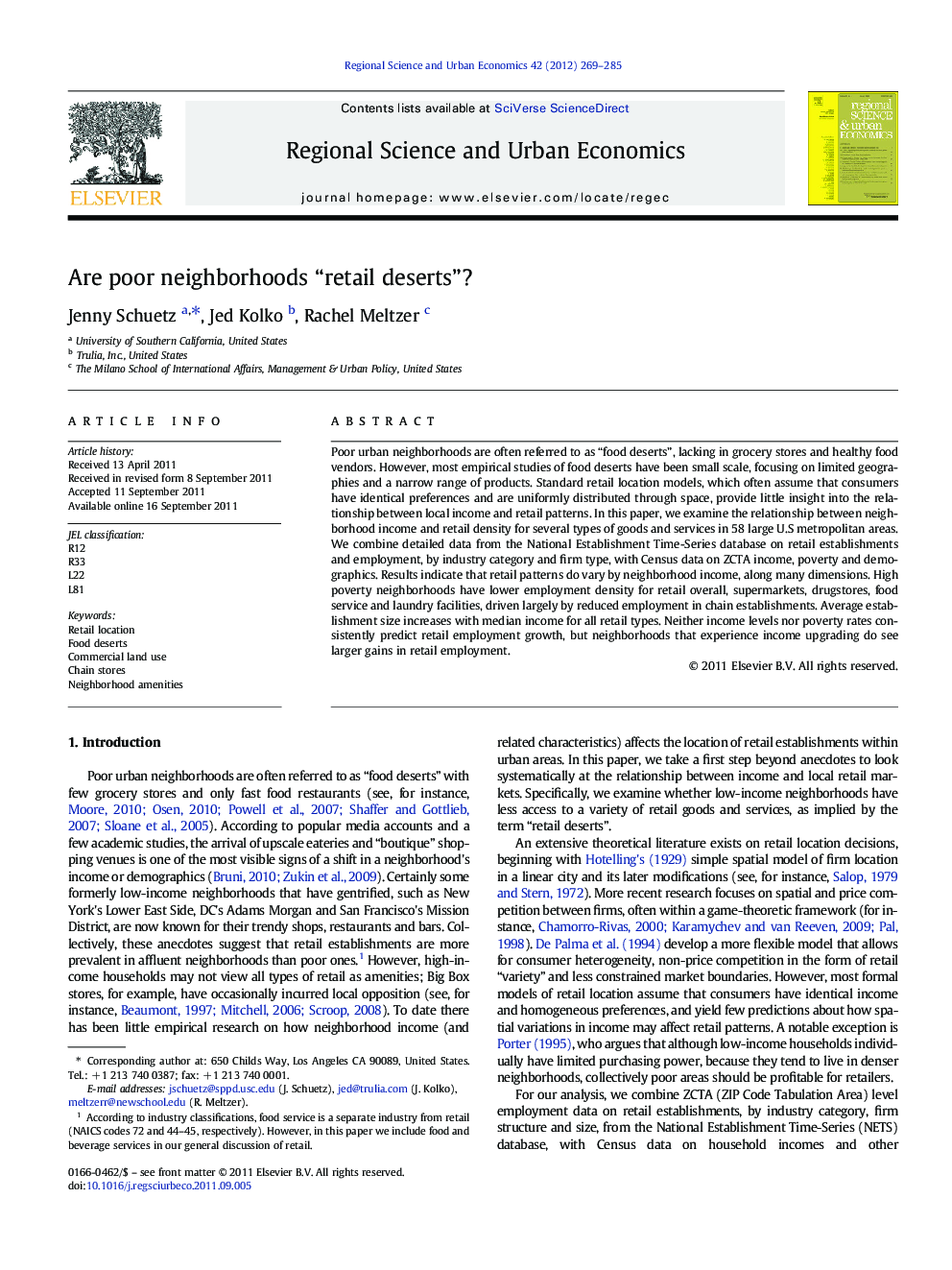| Article ID | Journal | Published Year | Pages | File Type |
|---|---|---|---|---|
| 981120 | Regional Science and Urban Economics | 2012 | 17 Pages |
Poor urban neighborhoods are often referred to as “food deserts”, lacking in grocery stores and healthy food vendors. However, most empirical studies of food deserts have been small scale, focusing on limited geographies and a narrow range of products. Standard retail location models, which often assume that consumers have identical preferences and are uniformly distributed through space, provide little insight into the relationship between local income and retail patterns. In this paper, we examine the relationship between neighborhood income and retail density for several types of goods and services in 58 large U.S metropolitan areas. We combine detailed data from the National Establishment Time-Series database on retail establishments and employment, by industry category and firm type, with Census data on ZCTA income, poverty and demographics. Results indicate that retail patterns do vary by neighborhood income, along many dimensions. High poverty neighborhoods have lower employment density for retail overall, supermarkets, drugstores, food service and laundry facilities, driven largely by reduced employment in chain establishments. Average establishment size increases with median income for all retail types. Neither income levels nor poverty rates consistently predict retail employment growth, but neighborhoods that experience income upgrading do see larger gains in retail employment.
► We examine the relationship between neighborhood income and retail patterns. ► Retail employment density increases with median household income. ► Retail establishment size is positively correlated with median household income. ► Poor neighborhoods have less supermarket employment and fewer chain supermarkets. ► Poor neighborhoods have more supermarket establishments.
